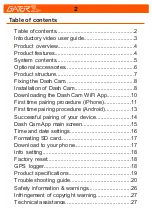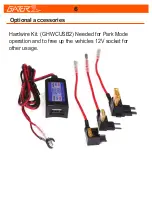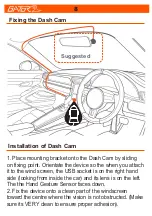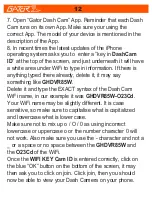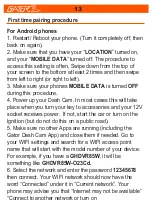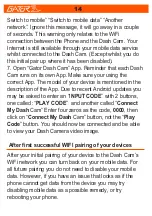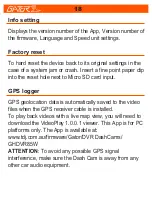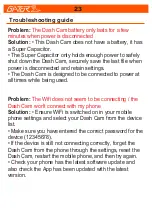
9
A place close to the rear-view mirror is ideal in most cases.
Do not install the device near an airbag. (Airbags are often
installed along the outer left- and right-hand sides of the
windscreen).
3. Insert the included Micro SD card into the Dash Cam
4. Insert the Micro USB end of the
GPS power cable
into
the Micro USB socket of the Dash Cam. Remove backing
off 3M tape of GPS cable and fix to window. Connect the
full-size USB plug into the USB socket of the power
adapter, insert the power adapter into a free 12V power
socket in the vehicle. The power cable is long enough to
run along the head lining, down the A pillar, under and
across the Dash to the transmission tunnel where it should
be in range of the vehicles 12V accessory power socket as
shown in the diagram above.
5. Rotate the Camera direction so that it is facing forward
and slightly down from horizontal. Later, using the App, you
can align it exactly so that 1⁄4 of the vehicles bonnet is
visible at the bottom of the Cameras image.
6. Turn the vehicles ignition to accessories, the Dash Cam
should automatically power ON, you will hear an audible
tone once powered. (Some 12V sockets require ignition on).
7. A red LED will start flashing and recording will start. The
unit records footage in small blocks. When the card is full,
the unit will replace the oldest recordings with the newest
footage as it is recorded. The available history is
dependent on the size of the SD cards capacity.


